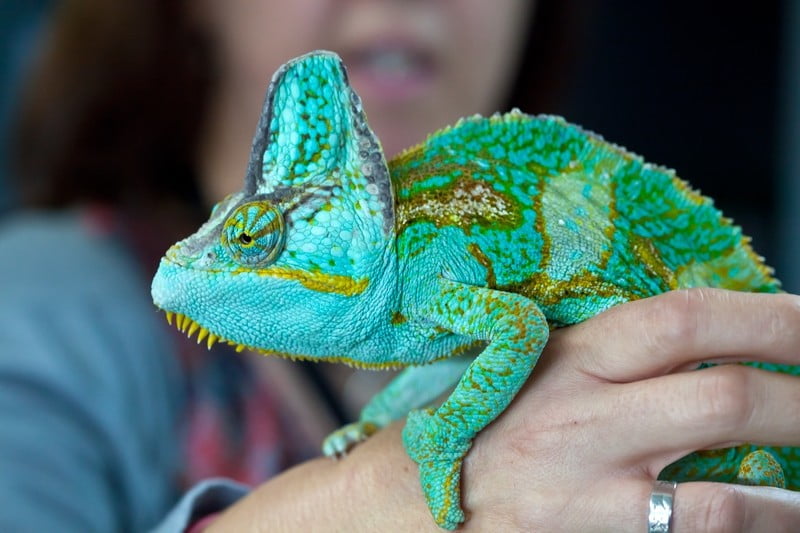Table of Contents
Reptiles can make fascinating and rewarding pets, but they can also exhibit a range of behavioral issues that can be challenging for their owners. Understanding and addressing these issues is crucial for ensuring the health and well-being of your pet reptile. In this article, we explore common behavioral issues in pet reptiles and provide tips on how to address them effectively.

Understanding Reptile Behavior
Before addressing specific behavioral issues, it’s important to understand normal reptile behavior. Reptiles have different social structures, environmental needs, and natural behaviors compared to mammals. For more on understanding reptile behavior, visit AVMA Reptile Care.
Common Behavioral Issues in Pet Reptiles
Aggression
Aggression in reptiles can be caused by territorial disputes, stress, or improper handling. Signs of aggression include hissing, biting, lunging, and tail whipping. Addressing aggression involves ensuring proper habitat setup, reducing stressors, and handling your reptile gently. For more on handling aggression, visit Reptiles Magazine Aggression Tips.
Refusal to Eat
Refusal to eat is a common issue in pet reptiles and can be caused by stress, illness, improper diet, or unsuitable habitat conditions. Ensure your reptile’s environment is optimal, provide a varied and species-appropriate diet, and consult a vet if the problem persists. For more on feeding issues, see Reptiles Magazine Feeding Tips.
Shedding Problems
Shedding problems can occur due to low humidity, stress, or nutritional deficiencies. Ensure your reptile’s habitat has the appropriate humidity levels and provide a diet rich in essential nutrients. For more on shedding issues, visit Cornell Vet Shedding Tips.
Hiding or Lethargy
Excessive hiding or lethargy can indicate stress, illness, or unsuitable habitat conditions. Ensure your reptile’s environment meets their specific needs, and monitor their health closely. For more on hiding and lethargy, see PetMD Reptile Behavior.
Excessive Clawing or Scratching
Excessive clawing or scratching can be a sign of stress or an attempt to escape an unsuitable environment. Check the temperature, humidity, and enclosure size to ensure they meet your reptile’s needs. For more on addressing this behavior, visit The Spruce Pets Escape Behavior.
Addressing Behavioral Issues in Pet Reptiles
Create an Optimal Habitat
Providing an appropriate habitat is crucial for preventing and addressing behavioral issues. Ensure the enclosure is the correct size, has proper lighting, heating, and humidity levels, and includes hiding spots and enrichment items. For habitat setup tips, see PETA Reptile Care.
Handle with Care
Proper handling is essential for preventing stress and aggression. Handle your reptile gently and support their body. Avoid handling when they are shedding, eating, or showing signs of stress. For more on handling techniques, visit Anapsid Handling Tips.
Provide a Balanced Diet
A balanced diet is vital for your reptile’s health and behavior. Ensure their diet includes all necessary nutrients and is appropriate for their species. Consult with a vet or reptile nutrition expert if you have concerns about your pet’s diet. For more on reptile nutrition, see Exotic Direct Nutrition Guide.
Monitor Health Regularly
Regular health checks can help detect and address issues early. Look for signs of illness such as changes in behavior, appetite, or appearance, and consult a vet if needed. For more on reptile health, visit AAHA Reptile Health Guidelines.
Reduce Stressors
Identify and reduce potential stressors in your reptile’s environment. This can include loud noises, frequent handling, or the presence of other pets. Creating a calm and stable environment can help alleviate stress-related behaviors. For more on reducing stress, see Cornell Vet Reptile Stress.
Conclusion
Addressing behavioral issues in pet reptiles requires understanding the underlying causes and providing an optimal environment. By ensuring proper habitat setup, gentle handling, a balanced diet, and regular health checks, you can help your reptile thrive. For more tips on reptile care and behavior, check out our Reptile Care Guide.
FAQs on Behavioral Issues in Pet Reptiles
What are common signs of stress in reptiles?
Common signs of stress include excessive hiding, lethargy, loss of appetite, and aggressive behavior.
How can I improve my reptile’s habitat?
Ensure the enclosure is the correct size, has proper lighting, heating, and humidity levels, and includes hiding spots and enrichment items.
What should I do if my reptile refuses to eat?
Check the habitat conditions, provide a varied diet, and consult a vet if the problem persists.
How often should I handle my reptile?
Handle your reptile gently and infrequently to avoid stress, especially during shedding, eating, or when showing signs of stress.
Can stress cause health problems in reptiles?
Yes, chronic stress can lead to health issues such as weakened immune function and increased susceptibility to illness.
When should I consult a vet about my reptile’s behavior?
Consult a vet if you notice persistent changes in behavior, appetite, or appearance that do not improve with environmental adjustments.











